Synopsis
Act 1 – The Gardens of the Duke of Alasia
In Cadonia, a mythical country where the king is frequently replaced, the soon-to-be crowned sovereign, Alexis, is tired of the limitations that are placed on his freedom. He learns that there is a conspiracy afoot to assassinate him, and therefore he shaves off his moustache and beard to escape. The disguise is successful. He soon meets Princess Marie, the daughter of the Duke of Alasia, heir presumptive to the Cadonian throne. The princess falls in love with the handsome stranger, and she is pleased to learn that the king has mysteriously disappeared. But her feelings of relief are not shared by her father, the duke, who dreads above all things being called upon to rule over such an unstable country as Cadonia.
Act 2 – The Palace of the King of Cadonia
Alexis, still disguised, infiltrates the murderous conspirators, the chief of whom is posing as head gardener to the duke. He wins the favourable opinion of the conspirators, so that when his true identity is finally revealed, they acknowledge that, at last, Cadonia has been fortunate enough to secure a monarch who may be trusted to rule his people discreetly and bravely. The princess is equally pleased to find that love and duty will now go hand-in-hand and the timid duke is no less delighted at the prospect of avoiding the throne.
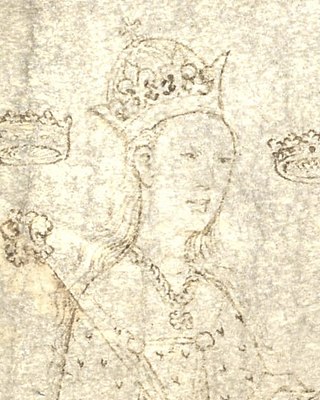
Anne Neville was Queen of England from 26 June 1483 until her death in 1485 as the wife of King Richard III. She was the younger of the two daughters and co-heiresses of Richard Neville, 16th Earl of Warwick, and Anne de Beauchamp. Before her marriage to Richard, she had been Princess of Wales as the wife of Edward of Westminster, Prince of Wales, the only son and heir apparent of King Henry VI.
An heir apparent is a person who is first in an order of succession and cannot be displaced from inheriting by the birth of another person. A person who is first in the current order of succession but could be displaced by the birth of a more eligible heir is known as heir presumptive.
An heir presumptive is the person entitled to inherit a throne, peerage, or other hereditary honour, but whose position can be displaced by the birth of a person with a better claim to the position in question. This is in contrast to an heir apparent, whose claim on the position cannot be displaced in this manner.

Sweethearts is an operetta or musical play in two acts with music by Victor Herbert, lyrics by Robert B. Smith and book by Harry B. Smith and Fred de Gresac.

Prince Philippe of Orléans, Count of Paris, was disputedly King of the French from 24 to 26 February 1848 as Louis Philippe II, although he was never officially proclaimed as such. He was the grandson of Louis Philippe I, King of the French. He was the Count of Paris as Orléanist claimant to the French throne from 1848 until his death. From 1883, when his cousin Henri, Count of Chambord died, he was often referred to by Orléanists and a large faction of Legitimists as Philippe VII.

The 4th House of Orléans, sometimes called the House of Bourbon-Orléans to distinguish it, is the fourth holder of a surname previously used by several branches of the Royal House of France, all descended in the legitimate male line from the dynasty's founder, Hugh Capet. The house was founded by Philippe I, Duke of Orléans, younger son of Louis XIII and younger brother of Louis XIV, the "Sun King".
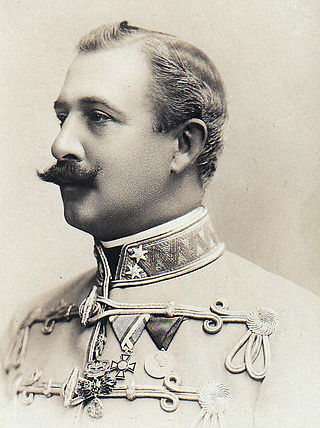
Archduke Otto Franz Joseph Karl Ludwig Maria of Austria was the second son of Archduke Karl Ludwig of Austria and his second wife, Princess Maria Annunziata of Bourbon-Two Sicilies. He was the father of Charles I of Austria, the final Emperor of Austria.

A Greek Slave is a musical comedy in two acts, first performed on 8 June 1898 at Daly's Theatre in London, produced by George Edwardes and ran for 349 performances. The score was composed by Sidney Jones with additional songs by Lionel Monckton and lyrics by Harry Greenbank and Adrian Ross. The libretto was written by Owen Hall. It starred Marie Tempest, Letty Lind, Hayden Coffin, Scott Russell, Huntley Wright and Rutland Barrington among other popular London stars. The show had a brief Broadway run in 1899.

Charles of France, Duke of Berry, was a grandson of Louis XIV of France. Although he was only a grandson of Louis XIV, Berry held the rank of fils de France, rather than petit-fils de France, as the son of the Dauphin, heir apparent to the throne. The Duke of Berry was for seven years (1700–1707) heir presumptive to the throne of Spain, until his elder brother Philip V of Spain fathered a son in 1707.

Infanta María Luisa Fernanda of Spain, Duchess of Montpensier was the younger daughter of King Ferdinand VII of Spain and his fourth wife and niece, Maria Christina of the Two Sicilies. She became Duchess of Montpensier by marriage to her first cousin once removed, Antoine, Duke of Montpensier.
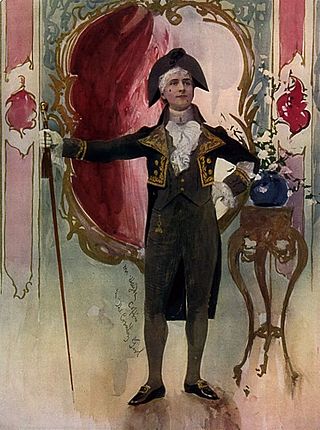
A Country Girl, or, Town and Country is a musical play in two acts by James T. Tanner, with lyrics by Adrian Ross, additional lyrics by Percy Greenbank, music by Lionel Monckton and additional songs by Paul Rubens.
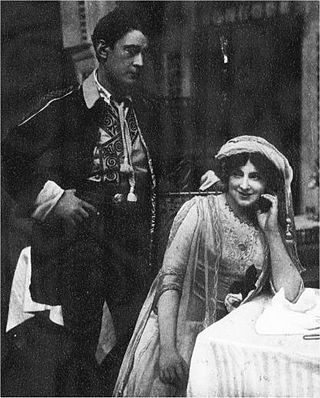
The Balkan Princess is a musical in three acts by Frederick Lonsdale and Frank Curzon, with lyrics by Paul Rubens and Arthur Wimperis, and music by Paul Rubens. It opened at London's Prince of Wales Theatre on 19 February 1910. The cast included Isabel Jay and Bertram Wallis. There was a successful Broadway run in 1911 that used a libretto by Leonard Liebling, and the show toured widely thereafter.
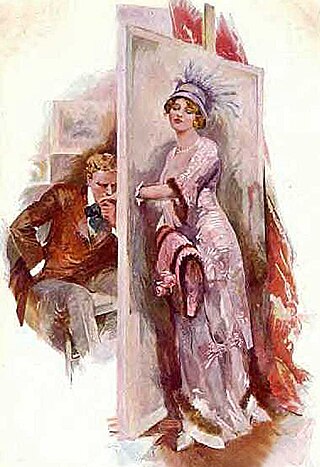
The Count of Luxembourg is an operetta in two acts with English lyrics and libretto by Basil Hood and Adrian Ross, music by Franz Lehár, based on Lehár's three-act German operetta Der Graf von Luxemburg which had premiered in Vienna in 1909. Lehár made amendments to his Viennese score to accommodate the two-act adaptation. He also interpolated into the score three new pieces: a waltz that he had written for a commemorative performance of Der Graf in Vienna; a song from his first operetta, Wiener Frauen; and a Russian dance from the opera Tatjana.
Bertram Wallis was an English actor and singer known for his performances in plays, musical comedies and operettas in the early 20th century, first as leading men and then in character roles. He also later appeared in several film roles.

Prince Alfonso, Count of Caserta was the third son of Ferdinand II of the Two Sicilies and Archduchess Maria Theresa of Austria.

Prince Louis Maria of Bourbon-Two Sicilies, Count of Trani was a member of the royal family of the Kingdom of the Two Sicilies.
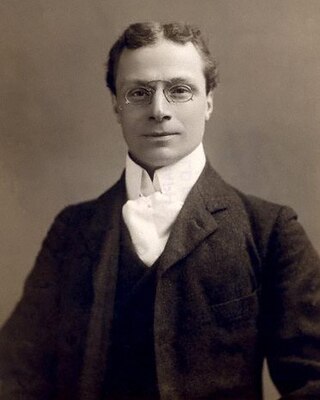
Huntley Wright was an English stage and film actor, comedian, dancer and singer, best known for creating roles in many important Edwardian musical comedies.
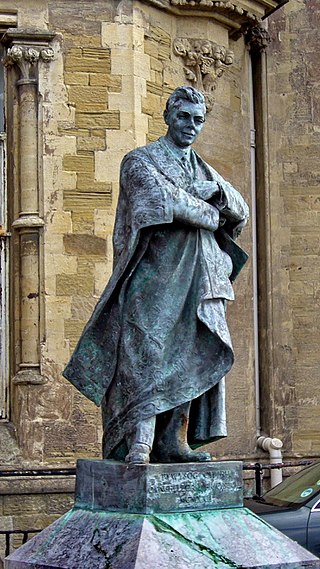
Edward VIII and Wallis Simpson have been depicted in popular culture, both biographical and fictional, following his abdication in 1936 and their marriage the following year.
Prince Hermann of Saxe-Weimar-Eisenach was a member of the House of Saxe-Weimar-Eisenach. He was heir to his relative William Ernest, Grand Duke of Saxe-Weimar-Eisenach until 1909, when he was disinherited of his royal status. From that point onwards, Hermann was commonly referred to with the lesser style, Graf von Ostheim.

Infanta Isabel Luísa Josefa of Portugal was the only child of Peter II of Portugal and his first wife and former sister-in-law, Maria Francisca of Savoy. She was the heiress presumptive to the throne of Portugal between 1668 and 1689, when her half-brother John was born. As such, she was styled Princess of Beira.
















